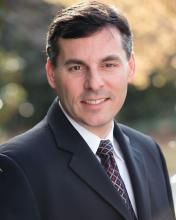User login
Starting in 2018, skilled nursing facilities (SNFs), like acute care hospitals before them, will be subject to a penalty of up to 2% of their Medicare reimbursement for posting higher-than-average rates of hospital readmissions.
The Protecting Access to Medicare Act of 2014 established a value-based purchasing component for SNFs, including incentives for high-performing facilities and a measure for all-cause, all-condition readmissions to any hospital from the SNF within 30 days following hospital discharge – designed to recognize and reward, or punish, facilities’ performance on preventing unnecessary readmissions. Public reporting of SNF quality data, including readmission rates, started in October 2017. Penalties follow a year later. Some patients’ readmissions could trigger penalties for both the hospital and the SNF.
According to 2010 data, 23.5% of patients discharged from acute care hospitals to SNFs were readmitted to the hospital within 30 days, at a financial cost of $10,362 per readmission or $4.34 billion per year.1 Seventy eight percent of these readmissions were labeled avoidable. More recent evidence suggests that hospitalization rates for dual-eligible patients living in long-term care facilities decreased by 31% between 2010 and 2015.2As increasing numbers of hospitalists spend some or all of their work week in post-acute care settings, how will the SNF readmission penalty affect their relationships with post-acute facilities?
Experts say SNFs – as with hospitals before them – lack the ability to allocate rewards or penalties for readmission rate performance to individual doctors. But increasingly close collaborative relationships between post-acute facilities and the hospitalists who work in post-acute care mean that the hospitalist has an important role in helping the SNF to manage its readmissions exposure.
“Hospitals and hospitalists want to keep good relationships with the SNFs they partner with, for a variety of reasons,” Dr. Frizner said. “We believe that the best way to reduce readmissions and unplanned transfers from the SNF is for the doctor to know the patient. We need dedicated doctors in the facility. We want hospitalists who already know the patient to come to the facility and see the patient there.”
The hospitalist’s role in post-acute care
Hospitalists who work in post-acute care typically make scheduled, billable medical visits to patients in long-term care facilities, and may also take on roles such as facility medical director or contribute to quality improvement. Relationships may be initiated by a facility seeking more medical coverage, by a hospitalist group seeking additional work or an ability to impact on the post-acute care delivered to hospital patients discharged to the facility, or by health systems, health plans, or accountable care organizations seeking to better manage the quality of care transitions for their beneficiaries.
“What I’m seeing is that with opportunities for bundled payments, we all have new incentives for moving patients along and reducing waste,” Dr. Boutwell said. “For hospitalists practicing in SNFs, it’s going to be a much bigger phenomenon. They’ll be called to reevaluate patients and make more visits than they have been accustomed to.” She hopes SNFs are studying what happened with hospitals’ readmission penalties, and will respond more quickly and effectively to their own penalty exposure.
“What we are seeing is an effort to shift folks to lower cost – but still clinically appropriate – levels of care,” he said. “These dynamics will force SNFs to reevaluate and improve their clinical competencies, to accept patients and then treat them in place. It’s no longer acceptable for the medical director to make rounds in person twice a month and do the rest by telephone.”
Instead, someone needs to be on site several times a week, working with nursing staff and developing protocols and pathways to control variability, Dr. Harrington said. “And in many cases that will be a hospitalist. Hospitalists are finding ways to partner and provide that level of care. I believe good hospitalist groups can change the facility for the better, and fairly quickly.”
What happens in post-acute care
Cari Levy, MD, PhD, who does hospital coverage and post-acute care for a number of facilities and home health agencies in the Denver area, calls the changes coming to SNFs a thrilling time for post-acute care.
“Suddenly medical professionals care about what happens in the post-acute world,” she said. “Everyone is now looking at the same measures. If this works the way it should, there would be a lot more mutual respect between providers.”
SNFs that are concerned about their readmissions rates will want to do root cause analysis to figure out what’s going on, Dr. Levy said. “Maybe the doctor didn’t do a good assessment. Maybe it was just a tough case. Once you start talking, you’ll develop systems to help everyone responsible. Hospitalists can be part of that conversation,” she said.
“You can have a good outcome at Shady Oaks and a terrible outcome at Whispering Pines, for all sorts of reasons. The hospital wants to make sure we’re sending patients to facilities that produce good outcomes,” he explained. “But there has to be communication between providers – the SNF medical director, the hospitalists, and the emergency department.”
A TeamHealth doctor in Phoenix has convened a consortium of providers from different care settings to meet and talk about cases and how they could have gone better. “The reality is, these conversations are going on all over,” Dr. Wilborn said. “What’s driving them is the realization of what we all need to do in this new environment.”
Opportunities from reforms
Robert Burke, MD, FHM, assistant chief of Hospital Medicine at the Denver VA Medical Center, is lead author of a study in the Journal of Hospital Medicine highlighting implications and opportunities from reforms in post-acute care.3 Hospitalists may not appreciate that post-acute care is poised to undergo transformative change from the recently legislated reforms, opening opportunities for hospitalists to improve health care value by improving transitions of care, he noted.
“My sense is that payment reform will put pressure on physicians to use home health care more often than institutional care, because of the cost pressures. We know that hospitalists choose long-term care facility placements less often when participating in bundled payment,” Dr. Burke said. “I think few hospitalists really know what happens on a day-to-day basis in SNFs – or in patients’ homes, for that matter.”
According to Dr. Burke, there’s just not enough data currently to guide these decisions. He said that, based on his research, the best thing hospitalists can do is try to understand what’s available in post-acute spaces, and build relationships with post-acute facilities.
“Find ways to get feedback on your discharge decisions,” he said. “Here in Colorado, we met recently with the local chapter of the Society for Post-Acute and Long-Term Care Medicine, also known as AMDA. It’s been revealing for everyone involved.”
He recommends AMDA’s learning modules – which are designed for doctors who are new to long-term care – to any hospitalist who is entering the post-acute world.
References
1. Mor V et al. The revolving door of rehospitalization from skilled nursing facilities. Health Aff (Millwood). 2010 Jan-Feb;29(1):57-64.
2. Brennan N et al. Data Brief: Sharp reduction in avoidable hospitalizations among long-term care facility residents. The CMS Blog, 2017 Jan 17.
3. Burke RE et al. Post-acute care reform: Implications and opportunities for hospitalists. J Hosp Med. 2017 Jan;12(1);46-51.
Starting in 2018, skilled nursing facilities (SNFs), like acute care hospitals before them, will be subject to a penalty of up to 2% of their Medicare reimbursement for posting higher-than-average rates of hospital readmissions.
The Protecting Access to Medicare Act of 2014 established a value-based purchasing component for SNFs, including incentives for high-performing facilities and a measure for all-cause, all-condition readmissions to any hospital from the SNF within 30 days following hospital discharge – designed to recognize and reward, or punish, facilities’ performance on preventing unnecessary readmissions. Public reporting of SNF quality data, including readmission rates, started in October 2017. Penalties follow a year later. Some patients’ readmissions could trigger penalties for both the hospital and the SNF.
According to 2010 data, 23.5% of patients discharged from acute care hospitals to SNFs were readmitted to the hospital within 30 days, at a financial cost of $10,362 per readmission or $4.34 billion per year.1 Seventy eight percent of these readmissions were labeled avoidable. More recent evidence suggests that hospitalization rates for dual-eligible patients living in long-term care facilities decreased by 31% between 2010 and 2015.2As increasing numbers of hospitalists spend some or all of their work week in post-acute care settings, how will the SNF readmission penalty affect their relationships with post-acute facilities?
Experts say SNFs – as with hospitals before them – lack the ability to allocate rewards or penalties for readmission rate performance to individual doctors. But increasingly close collaborative relationships between post-acute facilities and the hospitalists who work in post-acute care mean that the hospitalist has an important role in helping the SNF to manage its readmissions exposure.
“Hospitals and hospitalists want to keep good relationships with the SNFs they partner with, for a variety of reasons,” Dr. Frizner said. “We believe that the best way to reduce readmissions and unplanned transfers from the SNF is for the doctor to know the patient. We need dedicated doctors in the facility. We want hospitalists who already know the patient to come to the facility and see the patient there.”
The hospitalist’s role in post-acute care
Hospitalists who work in post-acute care typically make scheduled, billable medical visits to patients in long-term care facilities, and may also take on roles such as facility medical director or contribute to quality improvement. Relationships may be initiated by a facility seeking more medical coverage, by a hospitalist group seeking additional work or an ability to impact on the post-acute care delivered to hospital patients discharged to the facility, or by health systems, health plans, or accountable care organizations seeking to better manage the quality of care transitions for their beneficiaries.
“What I’m seeing is that with opportunities for bundled payments, we all have new incentives for moving patients along and reducing waste,” Dr. Boutwell said. “For hospitalists practicing in SNFs, it’s going to be a much bigger phenomenon. They’ll be called to reevaluate patients and make more visits than they have been accustomed to.” She hopes SNFs are studying what happened with hospitals’ readmission penalties, and will respond more quickly and effectively to their own penalty exposure.
“What we are seeing is an effort to shift folks to lower cost – but still clinically appropriate – levels of care,” he said. “These dynamics will force SNFs to reevaluate and improve their clinical competencies, to accept patients and then treat them in place. It’s no longer acceptable for the medical director to make rounds in person twice a month and do the rest by telephone.”
Instead, someone needs to be on site several times a week, working with nursing staff and developing protocols and pathways to control variability, Dr. Harrington said. “And in many cases that will be a hospitalist. Hospitalists are finding ways to partner and provide that level of care. I believe good hospitalist groups can change the facility for the better, and fairly quickly.”
What happens in post-acute care
Cari Levy, MD, PhD, who does hospital coverage and post-acute care for a number of facilities and home health agencies in the Denver area, calls the changes coming to SNFs a thrilling time for post-acute care.
“Suddenly medical professionals care about what happens in the post-acute world,” she said. “Everyone is now looking at the same measures. If this works the way it should, there would be a lot more mutual respect between providers.”
SNFs that are concerned about their readmissions rates will want to do root cause analysis to figure out what’s going on, Dr. Levy said. “Maybe the doctor didn’t do a good assessment. Maybe it was just a tough case. Once you start talking, you’ll develop systems to help everyone responsible. Hospitalists can be part of that conversation,” she said.
“You can have a good outcome at Shady Oaks and a terrible outcome at Whispering Pines, for all sorts of reasons. The hospital wants to make sure we’re sending patients to facilities that produce good outcomes,” he explained. “But there has to be communication between providers – the SNF medical director, the hospitalists, and the emergency department.”
A TeamHealth doctor in Phoenix has convened a consortium of providers from different care settings to meet and talk about cases and how they could have gone better. “The reality is, these conversations are going on all over,” Dr. Wilborn said. “What’s driving them is the realization of what we all need to do in this new environment.”
Opportunities from reforms
Robert Burke, MD, FHM, assistant chief of Hospital Medicine at the Denver VA Medical Center, is lead author of a study in the Journal of Hospital Medicine highlighting implications and opportunities from reforms in post-acute care.3 Hospitalists may not appreciate that post-acute care is poised to undergo transformative change from the recently legislated reforms, opening opportunities for hospitalists to improve health care value by improving transitions of care, he noted.
“My sense is that payment reform will put pressure on physicians to use home health care more often than institutional care, because of the cost pressures. We know that hospitalists choose long-term care facility placements less often when participating in bundled payment,” Dr. Burke said. “I think few hospitalists really know what happens on a day-to-day basis in SNFs – or in patients’ homes, for that matter.”
According to Dr. Burke, there’s just not enough data currently to guide these decisions. He said that, based on his research, the best thing hospitalists can do is try to understand what’s available in post-acute spaces, and build relationships with post-acute facilities.
“Find ways to get feedback on your discharge decisions,” he said. “Here in Colorado, we met recently with the local chapter of the Society for Post-Acute and Long-Term Care Medicine, also known as AMDA. It’s been revealing for everyone involved.”
He recommends AMDA’s learning modules – which are designed for doctors who are new to long-term care – to any hospitalist who is entering the post-acute world.
References
1. Mor V et al. The revolving door of rehospitalization from skilled nursing facilities. Health Aff (Millwood). 2010 Jan-Feb;29(1):57-64.
2. Brennan N et al. Data Brief: Sharp reduction in avoidable hospitalizations among long-term care facility residents. The CMS Blog, 2017 Jan 17.
3. Burke RE et al. Post-acute care reform: Implications and opportunities for hospitalists. J Hosp Med. 2017 Jan;12(1);46-51.
Starting in 2018, skilled nursing facilities (SNFs), like acute care hospitals before them, will be subject to a penalty of up to 2% of their Medicare reimbursement for posting higher-than-average rates of hospital readmissions.
The Protecting Access to Medicare Act of 2014 established a value-based purchasing component for SNFs, including incentives for high-performing facilities and a measure for all-cause, all-condition readmissions to any hospital from the SNF within 30 days following hospital discharge – designed to recognize and reward, or punish, facilities’ performance on preventing unnecessary readmissions. Public reporting of SNF quality data, including readmission rates, started in October 2017. Penalties follow a year later. Some patients’ readmissions could trigger penalties for both the hospital and the SNF.
According to 2010 data, 23.5% of patients discharged from acute care hospitals to SNFs were readmitted to the hospital within 30 days, at a financial cost of $10,362 per readmission or $4.34 billion per year.1 Seventy eight percent of these readmissions were labeled avoidable. More recent evidence suggests that hospitalization rates for dual-eligible patients living in long-term care facilities decreased by 31% between 2010 and 2015.2As increasing numbers of hospitalists spend some or all of their work week in post-acute care settings, how will the SNF readmission penalty affect their relationships with post-acute facilities?
Experts say SNFs – as with hospitals before them – lack the ability to allocate rewards or penalties for readmission rate performance to individual doctors. But increasingly close collaborative relationships between post-acute facilities and the hospitalists who work in post-acute care mean that the hospitalist has an important role in helping the SNF to manage its readmissions exposure.
“Hospitals and hospitalists want to keep good relationships with the SNFs they partner with, for a variety of reasons,” Dr. Frizner said. “We believe that the best way to reduce readmissions and unplanned transfers from the SNF is for the doctor to know the patient. We need dedicated doctors in the facility. We want hospitalists who already know the patient to come to the facility and see the patient there.”
The hospitalist’s role in post-acute care
Hospitalists who work in post-acute care typically make scheduled, billable medical visits to patients in long-term care facilities, and may also take on roles such as facility medical director or contribute to quality improvement. Relationships may be initiated by a facility seeking more medical coverage, by a hospitalist group seeking additional work or an ability to impact on the post-acute care delivered to hospital patients discharged to the facility, or by health systems, health plans, or accountable care organizations seeking to better manage the quality of care transitions for their beneficiaries.
“What I’m seeing is that with opportunities for bundled payments, we all have new incentives for moving patients along and reducing waste,” Dr. Boutwell said. “For hospitalists practicing in SNFs, it’s going to be a much bigger phenomenon. They’ll be called to reevaluate patients and make more visits than they have been accustomed to.” She hopes SNFs are studying what happened with hospitals’ readmission penalties, and will respond more quickly and effectively to their own penalty exposure.
“What we are seeing is an effort to shift folks to lower cost – but still clinically appropriate – levels of care,” he said. “These dynamics will force SNFs to reevaluate and improve their clinical competencies, to accept patients and then treat them in place. It’s no longer acceptable for the medical director to make rounds in person twice a month and do the rest by telephone.”
Instead, someone needs to be on site several times a week, working with nursing staff and developing protocols and pathways to control variability, Dr. Harrington said. “And in many cases that will be a hospitalist. Hospitalists are finding ways to partner and provide that level of care. I believe good hospitalist groups can change the facility for the better, and fairly quickly.”
What happens in post-acute care
Cari Levy, MD, PhD, who does hospital coverage and post-acute care for a number of facilities and home health agencies in the Denver area, calls the changes coming to SNFs a thrilling time for post-acute care.
“Suddenly medical professionals care about what happens in the post-acute world,” she said. “Everyone is now looking at the same measures. If this works the way it should, there would be a lot more mutual respect between providers.”
SNFs that are concerned about their readmissions rates will want to do root cause analysis to figure out what’s going on, Dr. Levy said. “Maybe the doctor didn’t do a good assessment. Maybe it was just a tough case. Once you start talking, you’ll develop systems to help everyone responsible. Hospitalists can be part of that conversation,” she said.
“You can have a good outcome at Shady Oaks and a terrible outcome at Whispering Pines, for all sorts of reasons. The hospital wants to make sure we’re sending patients to facilities that produce good outcomes,” he explained. “But there has to be communication between providers – the SNF medical director, the hospitalists, and the emergency department.”
A TeamHealth doctor in Phoenix has convened a consortium of providers from different care settings to meet and talk about cases and how they could have gone better. “The reality is, these conversations are going on all over,” Dr. Wilborn said. “What’s driving them is the realization of what we all need to do in this new environment.”
Opportunities from reforms
Robert Burke, MD, FHM, assistant chief of Hospital Medicine at the Denver VA Medical Center, is lead author of a study in the Journal of Hospital Medicine highlighting implications and opportunities from reforms in post-acute care.3 Hospitalists may not appreciate that post-acute care is poised to undergo transformative change from the recently legislated reforms, opening opportunities for hospitalists to improve health care value by improving transitions of care, he noted.
“My sense is that payment reform will put pressure on physicians to use home health care more often than institutional care, because of the cost pressures. We know that hospitalists choose long-term care facility placements less often when participating in bundled payment,” Dr. Burke said. “I think few hospitalists really know what happens on a day-to-day basis in SNFs – or in patients’ homes, for that matter.”
According to Dr. Burke, there’s just not enough data currently to guide these decisions. He said that, based on his research, the best thing hospitalists can do is try to understand what’s available in post-acute spaces, and build relationships with post-acute facilities.
“Find ways to get feedback on your discharge decisions,” he said. “Here in Colorado, we met recently with the local chapter of the Society for Post-Acute and Long-Term Care Medicine, also known as AMDA. It’s been revealing for everyone involved.”
He recommends AMDA’s learning modules – which are designed for doctors who are new to long-term care – to any hospitalist who is entering the post-acute world.
References
1. Mor V et al. The revolving door of rehospitalization from skilled nursing facilities. Health Aff (Millwood). 2010 Jan-Feb;29(1):57-64.
2. Brennan N et al. Data Brief: Sharp reduction in avoidable hospitalizations among long-term care facility residents. The CMS Blog, 2017 Jan 17.
3. Burke RE et al. Post-acute care reform: Implications and opportunities for hospitalists. J Hosp Med. 2017 Jan;12(1);46-51.





